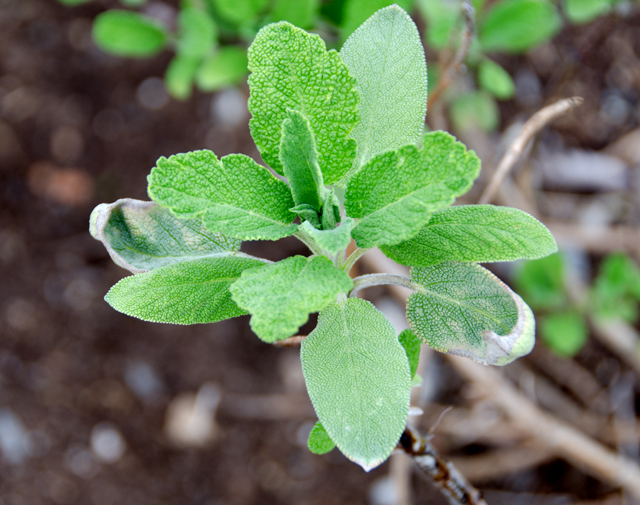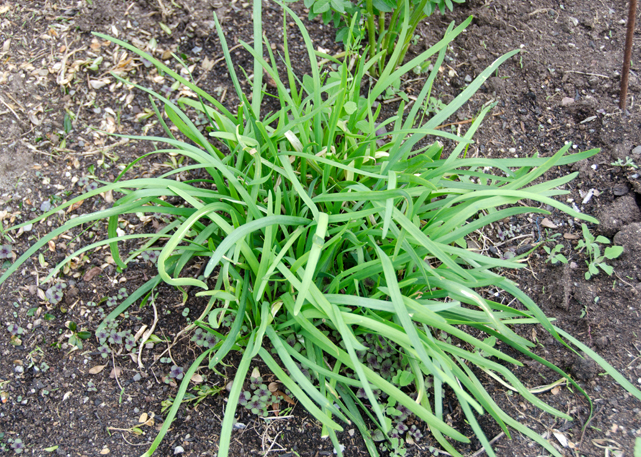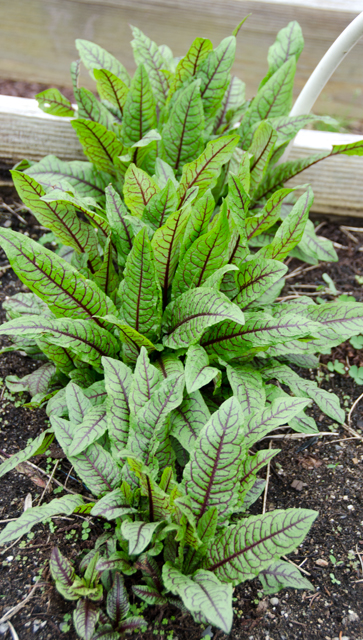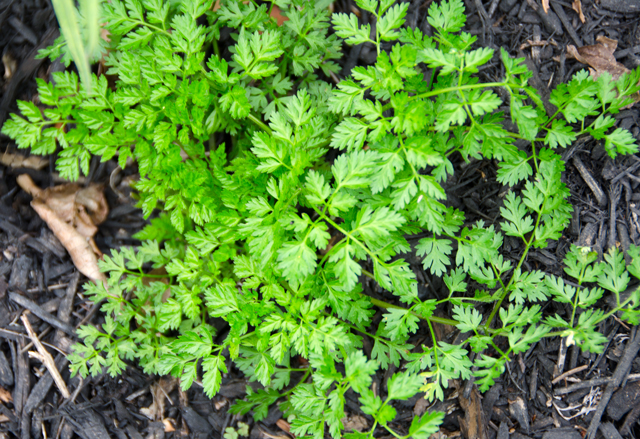
Spring is in the air and as Joni said, “it’s time to get ourselves back to the garden.” Actually Joe has been preparing for this year’s garden for several months now. Summer favorites like tomatoes, eggplants and peppers are planted in seed starting trays and placed under grow lights.When large enough they are planted into individual larger pots. The plants will reside in the garden greenhouse to be hardened off before they are planted in the warmer soil of late May/early June. Other early spring vegetables are directly sown into beds inside cold frames. That includes salad greens, radishes, beets, baby turnips, chard and spinach. Edible pod peas, snow and sugar snap, are grown for both the peas and also the pea shoots.
Chervil is annual herb that prefers the cooler temperatures of spring and fall. It is in the same plant family as parsley and carrots with delicate curly leaves that resemble something between the two. Its flavor is delicate and reminiscent of mild anise or licorice. Mature chervil plants produce a white flower that is edible and looks pretty garnishing a salad.
Chervil is definitely an herb to grow yourself. It is sold dried (I personally wouldn’t bother) it is most fully appreciated when picked fresh. It is easy to grow and can be planted along with early season vegetables. Plant seeds in moist soil in an area that gets partial sun. It also does well in containers. Even though chervil is an annual (plants that complete their life cycle in a year) it self seeds easily. For years the chervil Joe planted came back in the garden until one year there was no sign of it. Much to our surprise it showed up on the other side of the house, a good distance away.
Sage has always been a part of our herb garden.Joe grows both culinary and ornamental sage in a wide range of colors. Common garden sage has a silvery green color and has the best flavor for cooking. Spring is the time to trim away any dead branches.
Chinese or garlic chives as the name indicates, have a mild onion-garlic flavor. Common chives are tube-shaped and bright green in color with pinkish lavender flower that appear in late spring. Garlic chives have dark green flat leaves and flowers that are white and star-shaped. I would suggest growing them in a pot, ours have become invasive. If you plant them directly in the soil, cut off the flower stalks as soon as they finish blooming.
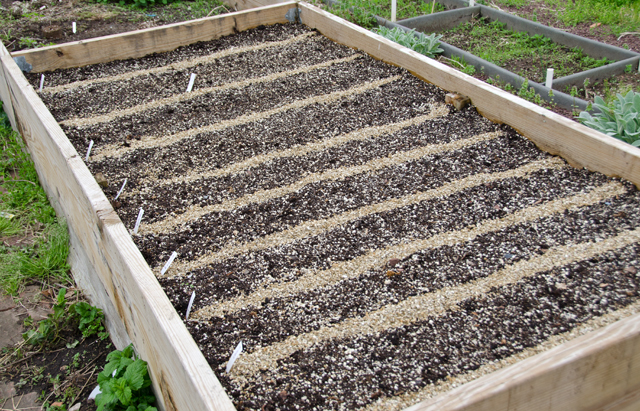
“Raspberry Dressing” Rumex does double duty as an edible ornamental. Its bright green leaves with red veins add a pop of color to the garden. Smaller leaves can be added to a salad, larger leaves can be cooked like spinach.
